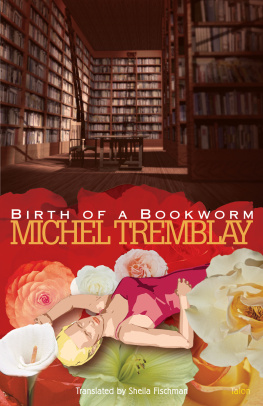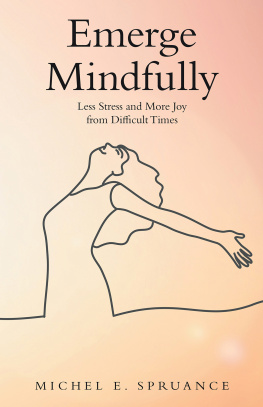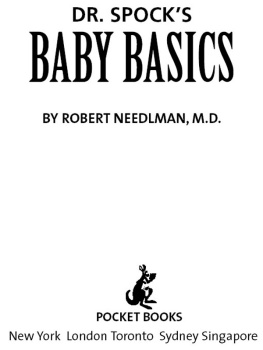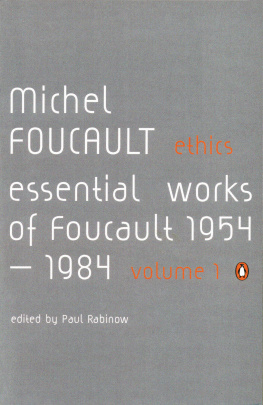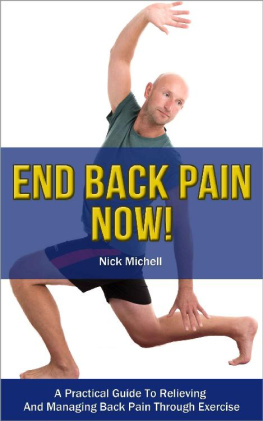To my parents,
who gave me life and taught me how to enjoy it
To Ben and Lela,
my inspirations
To my love, Jeannie,
without whom this book would not be
And to the joys of my life,
Abeline, Nora, and Fanny
Thank you, little creatures who brighten my days with your smiles.
To your parents: Together, we have achieved our own little revolution in the world of medicine. This is your book as well.
To Judith Regan, the mastermind, for this wonderful opportunity.
To Aliza Fogelson, smart as a whip, gentle as a lamb. Your professionalism and thoroughness were a tremendous help.
To Laurie Liss, my very special agent, for your hard work.
And to you, Barak Zimmerman, for helping me find the words. You lost a few nights of sleep, but you sure saved the day.
Imagine a book that provides simple and reliable information on caring for your child, one that treats you like an adult and gives you what you need to know, no more and no less. Imagine a book that promotes a softer approach to pediatric care and takes a stand against overuse of medication; a book, in short, that doesnt drive you crazy at a time when, as a new parent, youre scrambling to process all the available information and make good choices.
Ten years ago, I established my pediatric practice in Manhattans Tribeca district. My goal was to offer kids the best medical care while avoiding unnecessary intervention. Working with the thousands of parents who have entrusted me with their children, I developed the philosophy that informs this book: Less medicine is often the best medicine.
We are entering a new era in health care. On the one hand, technology has made possible amazing advances in treatment. On the other hand, theres a return to the basic principle of the Hippocratic oath: First, do no harm. Slowly but surely, patients and doctors are realizing that we need not medicate all ills. Not every fever should be reduced if it helps fight a virus. Not every cough should be suppressed if it clears the airway. Not every bacterial infection should be attacked with powerful antibiotics if the body stands a good chance of fighting off the infection and thus strengthening its own immunity. This new thinking makes even more sense in regard to children, to whom nature is very gentle. Most childhood illnesses are simple and self-resolving. One should be vigilant to monitor symptoms but also to respect the bodys natural defenses and to avoid unnecessary or even detrimental interventions.
The New Basics is the fruit of my ten years in practice, of raising my three kids, and of my experiences outside the realm of medicine. Within these pages, in a convenient A-to-Z format, youll find the important medical and developmental issues youll face in caring for your young child. To humanize this ocean of information, I have invented two imaginary patients: a baby named Lucy and a toddler named Jimmy. When facing challenging situations regarding your child, youll know clearly when to worry, when not to worry, what to do, and what not to do. Youll receive guidance on when to actively intervene but also when a laissez-faire approach is your best option. Youll learn how to ignore the frivolous myths that can impair your judgment. In the end, I hope that reading this book will help you relax as a parent.
See also | Tonsils
Adenoids are glands located behind the nose. (Dont bother looking; you cant see them without fancy equipment.) Along with the tonsils (which you can see in the back of the throat), the adenoids trap the germs we inhale. Occasionally, these glands cause more harm than good. They become enlarged, obstruct the airway, and provide a playground for viruses and bacteria.
Enlarged adenoids primarily affect young children, with the following possible consequences:
- Difficulty breathing through the nose, a nasal voice, or snoring, none of which is a major problem.
- Persistent colds: Some kids always seem to have a runny nose.
- Repetitive ear infections, because germs ascend from the adenoids up through the eustachian tubes to infect the middle ear [].
- Repetitive ear infections, which can in turn lead to a fluid buildup in the middle ear and cause temporary hearing loss.
- Sleep apnea, a condition in which a child stops breathing for more than five seconds (an eternity for the parent) several times during the night. These pauses may strain the heart by making it pump harder to meet the bodys oxygen demand [].
Years ago, almost all kids had their adenoids removed at the first little sneeze. These days, the thinking is more conservative. Since enlarged adenoids will most likely shrink with age, repetitive colds and snoring alone do not warrant removal. On the other hand, if your kid develops significant sleep apnea or a substantial hearing loss from frequent ear infections, surgery is probably indicated, but rarely before four years of age.
Removal of the adenoids is a simple outpatient procedure with swift recovery and extremely infrequent complications. When the tonsils are also removed, kids suffer slightly more postoperative risk and discomfort [].
Adenoid removal is spectacularly successful in reducing sleep apnea. Recurrence of ear infections also decreases drastically after surgery, especially when ear tubes are indicated and inserted concomitantly. However, recurrent ear infections may not fully disappear.
REAL QUESTIONS FROM REAL PARENTS
Is there any alternative to surgery?
Some doctors prescribe antibiotics in an attempt to avoid surgery. This is a noble idea in theory, but it achieves very little. Nasal steroid sprays are another favorite treatment. Both of these approaches can buy you a little time, but they wont eliminate the need for the operation.
Can adenoids regrow?
Once removed, adenoids can regrow in a matter of months or years after the operation. By the time they do, however, the child is larger, with larger nasal passages and greater resistance to infection.
Every pediatric practice cares for a large number of adopted kids from different countries. I love to see families bring home children from remote parts of the world, because not only does each adoption represent incredible opportunities for parent and child alike, but its also fascinating to watch these kids adapt to their new lives. Here is what you can anticipate in terms of caring for your adopted child before, during, and after adoption.
Before
Care starts before the kid is actually in the family. Prospective parents bring me photos, medical records, and even videos of their future children. Some ask my advice concerning the health assessments theyve received from adoption intermediaries. I advise them not to rely on these, because they are often inaccurate or deceptive. These kids can present a wide and sometimes undocumented variety of health concerns or diagnoses that are erroneous. However, kids adopted in the United States generally have complete health records, since theyre usually adopted at birth from American hospitals.
For most parents, physical ailments would rarely deter them from adoption once theyve been paired up with a child; theyre ready to deal with these issues at home, no matter what. One exception of course is HIV status, because of the poor prognosis for afflicted children. In most countries, reliable HIV testing is performed at birth and made available to prospective parents. Other potential illnesses in developed countries, especially among older children, include rickets, vitamin deficiency, tuberculosis, and malnutrition. Effects of alcohol and drug use during pregnancy are less common in foreign-born children than in American kids. Family history is usually unavailable or unreliable for kids from overseas and to a lesser degree for United States kids. As with biological children, we deal with issues as they arise, no matter what family history comes into play.



